This is a preprint.
Hacking brain development to test models of sensory coding
- PMID: 36747712
- PMCID: PMC9900841
- DOI: 10.1101/2023.01.25.525425
Hacking brain development to test models of sensory coding
Abstract
Animals can discriminate myriad sensory stimuli but can also generalize from learned experience. You can probably distinguish the favorite teas of your colleagues while still recognizing that all tea pales in comparison to coffee. Tradeoffs between detection, discrimination, and generalization are inherent at every layer of sensory processing. During development, specific quantitative parameters are wired into perceptual circuits and set the playing field on which plasticity mechanisms play out. A primary goal of systems neuroscience is to understand how material properties of a circuit define the logical operations-computations--that it makes, and what good these computations are for survival. A cardinal method in biology-and the mechanism of evolution--is to change a unit or variable within a system and ask how this affects organismal function. Here, we make use of our knowledge of developmental wiring mechanisms to modify hard-wired circuit parameters in the Drosophila melanogaster mushroom body and assess the functional and behavioral consequences. By altering the number of expansion layer neurons (Kenyon cells) and their dendritic complexity, we find that input number, but not cell number, tunes odor selectivity. Simple odor discrimination performance is maintained when Kenyon cell number is reduced and augmented by Kenyon cell expansion.
Figures
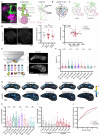
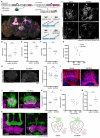
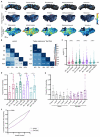
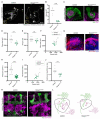
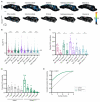
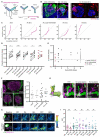
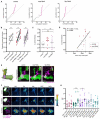
Similar articles
-
Input density tunes Kenyon cell sensory responses in the Drosophila mushroom body.Curr Biol. 2023 Jul 10;33(13):2742-2760.e12. doi: 10.1016/j.cub.2023.05.064. Epub 2023 Jun 21. Curr Biol. 2023. PMID: 37348501 Free PMC article.
-
Presynaptic developmental plasticity allows robust sparse wiring of the Drosophila mushroom body.Elife. 2020 Jan 8;9:e52278. doi: 10.7554/eLife.52278. Elife. 2020. PMID: 31913123 Free PMC article.
-
Mushroom body output neurons MBON-a1/a2 define an odor intensity channel that regulates behavioral odor discrimination learning in larval Drosophila.Front Physiol. 2023 May 15;14:1111244. doi: 10.3389/fphys.2023.1111244. eCollection 2023. Front Physiol. 2023. PMID: 37256074 Free PMC article.
-
Unraveling Cross-Modal Development in Animals: Neural Substrate, Functional Coding and Behavioral Readout.Multisens Res. 2015;28(1-2):33-69. doi: 10.1163/22134808-00002477. Multisens Res. 2015. PMID: 26152052 Review.
-
Consequences of tuning network function by tonic and phasic locus coeruleus output and stress: Regulating detection and discrimination of peripheral stimuli.Brain Res. 2019 Apr 15;1709:16-27. doi: 10.1016/j.brainres.2018.06.015. Epub 2018 Jun 13. Brain Res. 2019. PMID: 29908165 Review.
References
-
- Akerboom J., Chen T.-W., Wardill T.J., Tian L., Marvin J.S., Mutlu S., Calderón N.C., Esposti F., Borghuis B.G., Sun X.R., Gordus A., Orger M.B., Portugues R., Engert F., Macklin J.J., Filosa A., Aggarwal A., Kerr R.A., Takagi R., Kracun S., Shigetomi E., Khakh B.S., Baier H., Lagnado L., Wang S.S.-H., Bargmann C.I., Kimmel B.E., Jayaraman V., Svoboda K., Kim D.S., Schreiter E.R., Looger L.L., 2012. Optimization of a GCaMP calcium indicator for neural activity imaging. J. Neurosci. 32, 13819–13840. 10.1523/JNEUROSCI.2601-12.2012 - DOI - PMC - PubMed
-
- Albus J.S., 1971. A theory of cerebellar function. Mathematical Biosciences 10, 25–61. 10.1016/0025-5564(71)90051-4 - DOI
Publication types
Grants and funding
LinkOut - more resources
Full Text Sources
